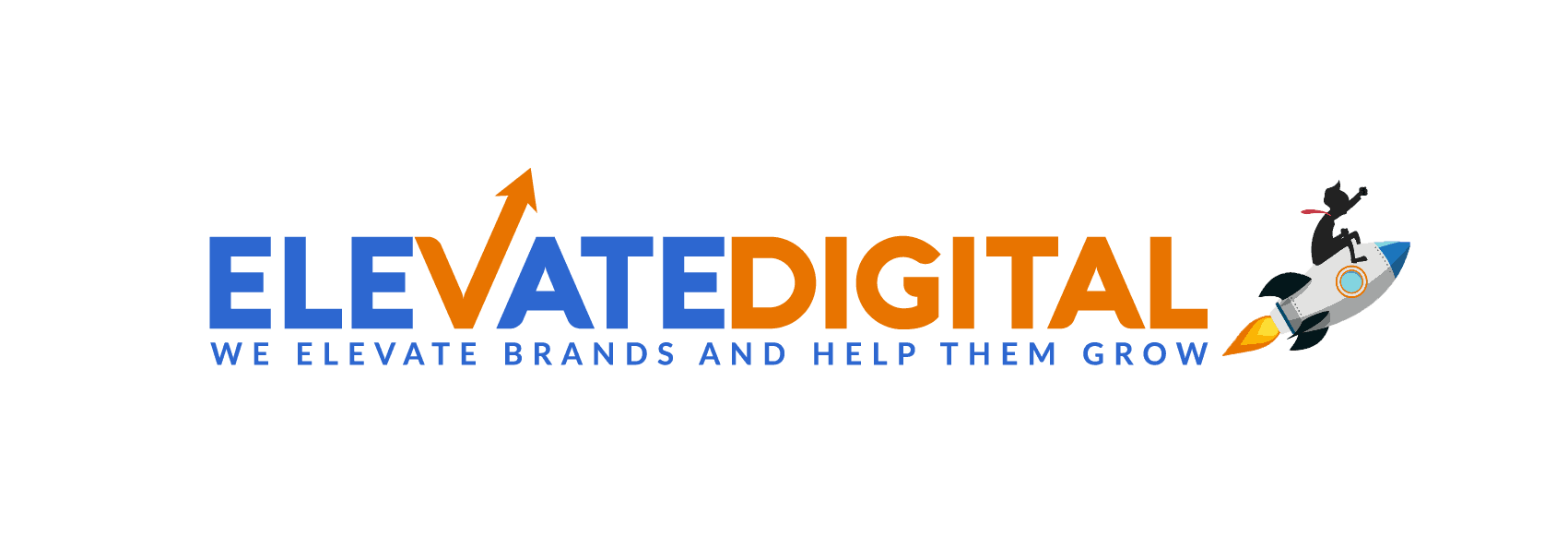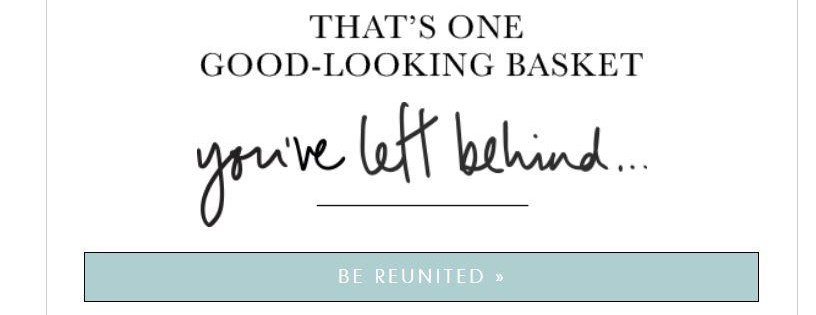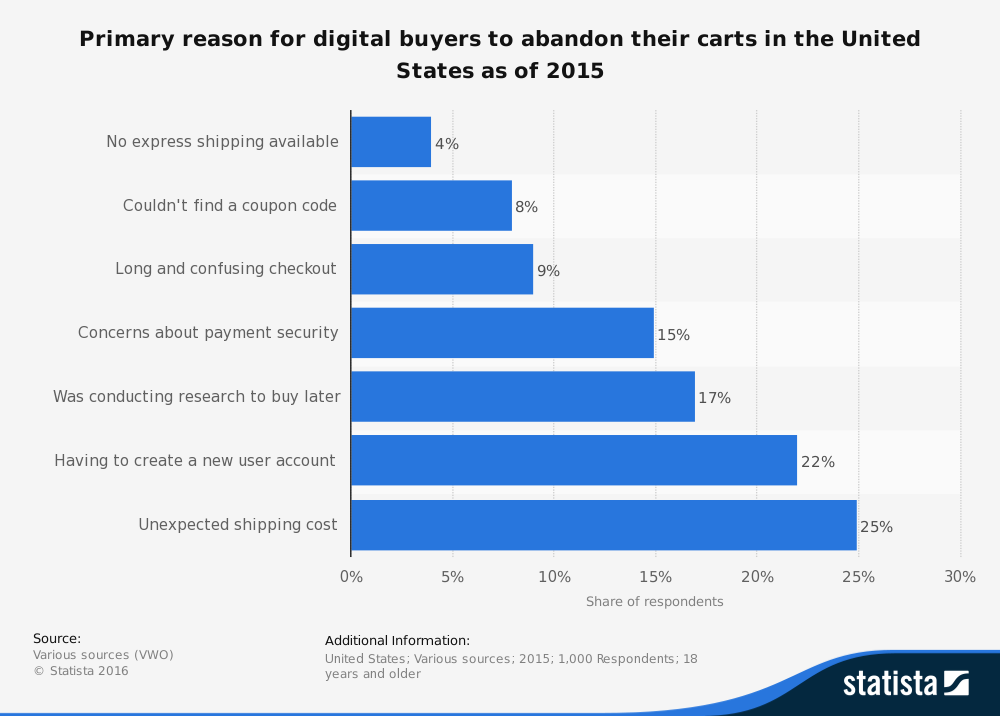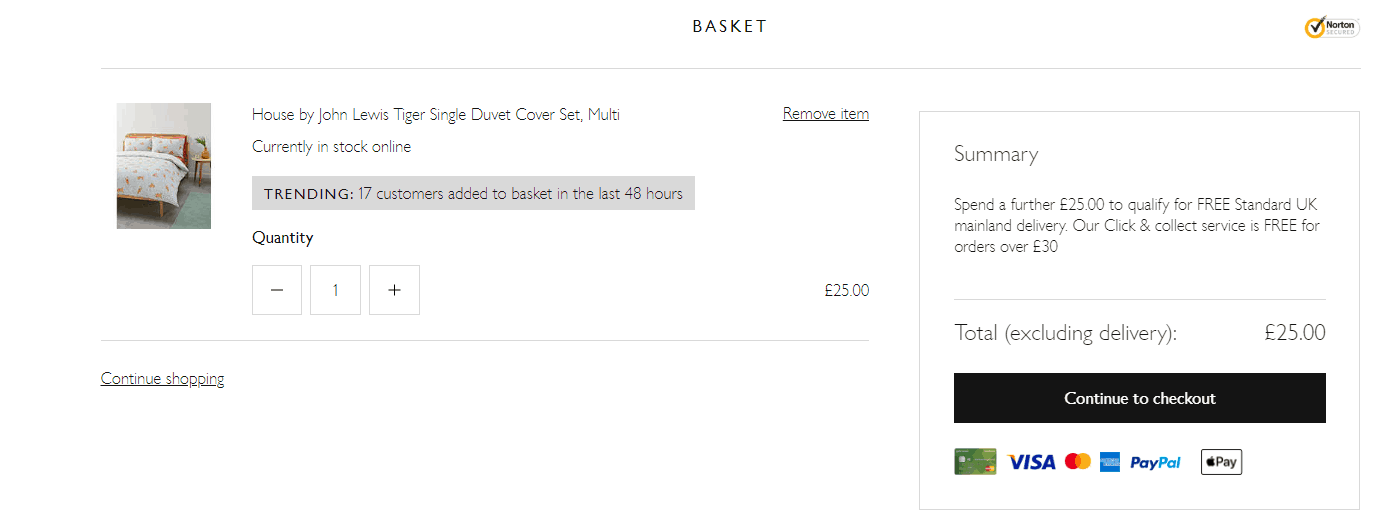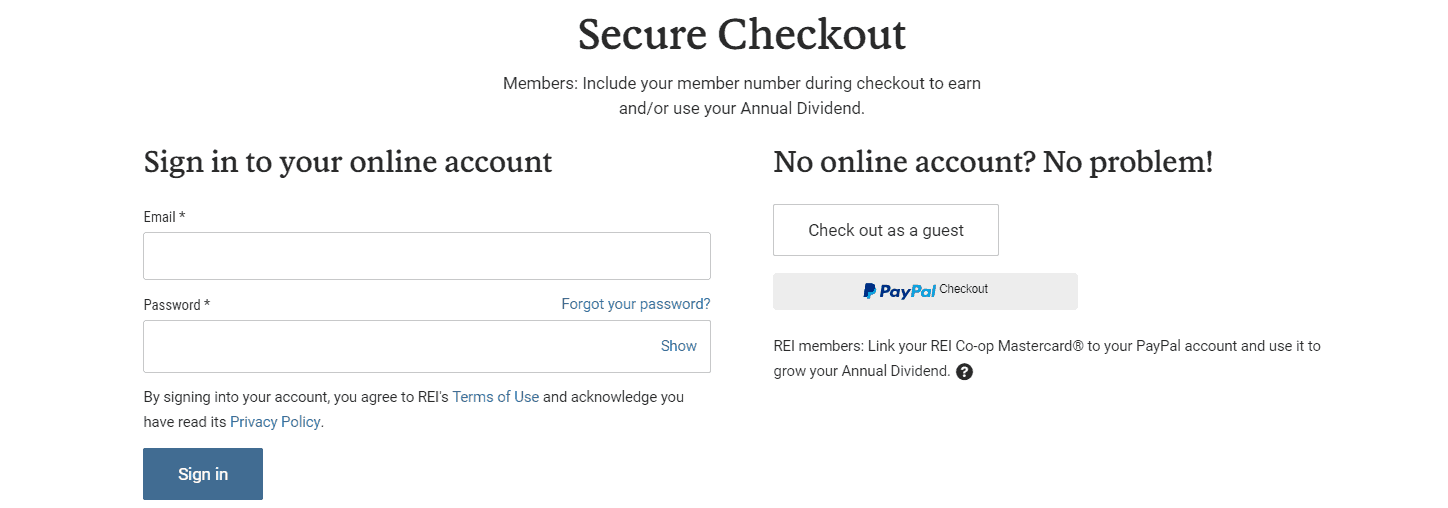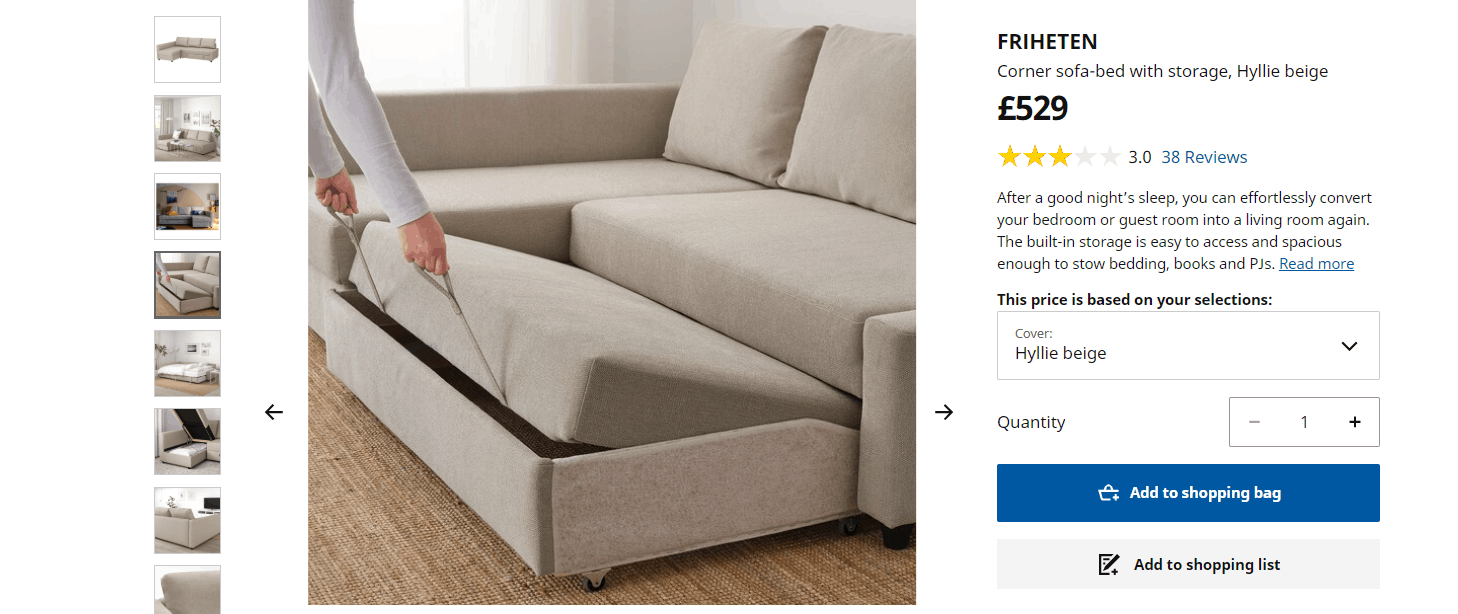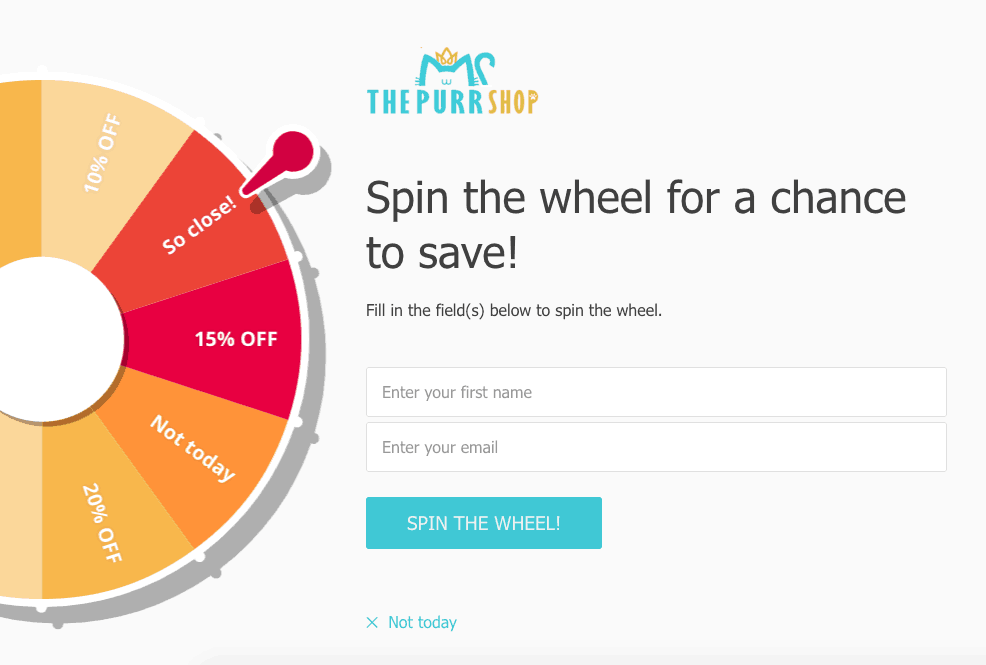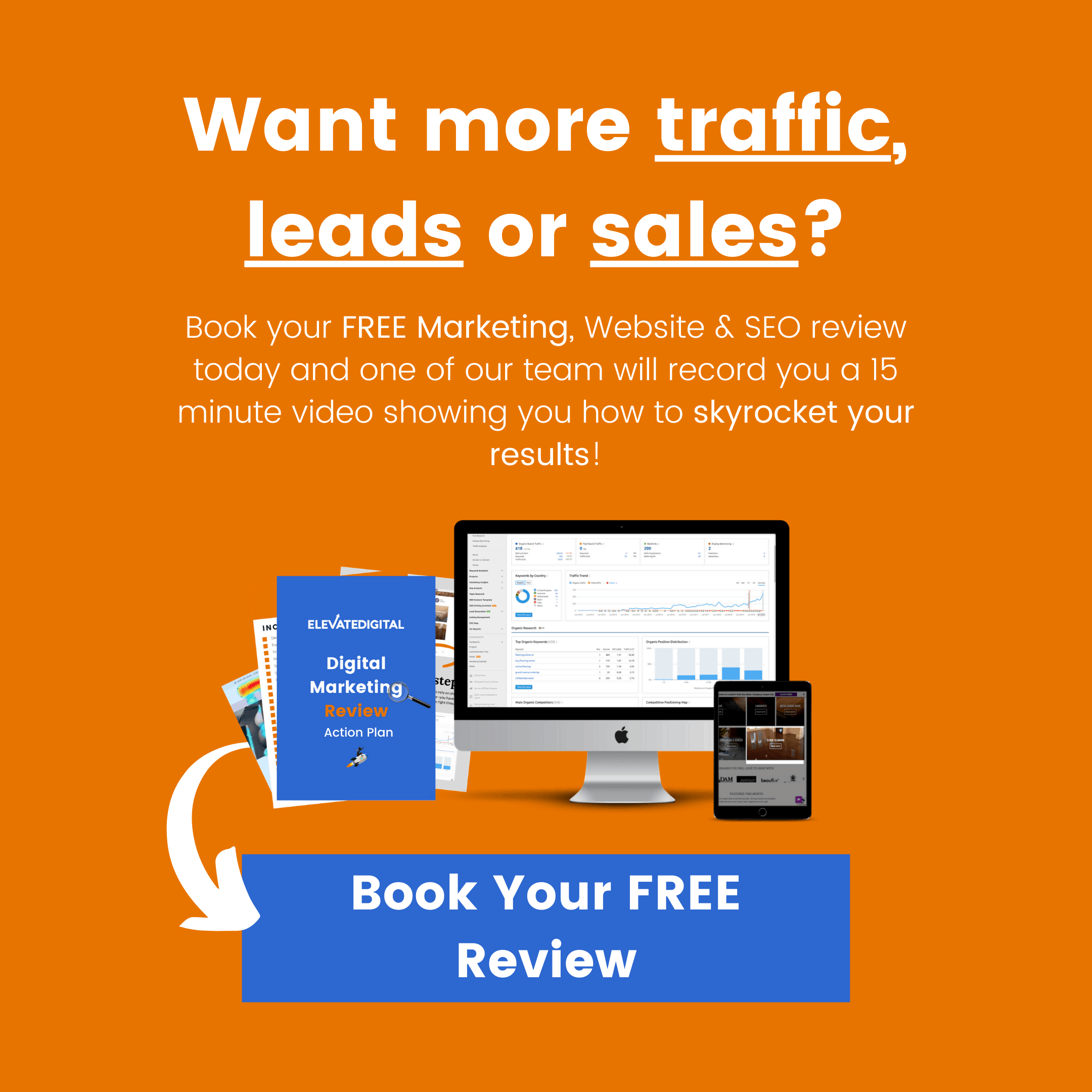Increasing your ecommerce store conversion rate is one of the fastest ways to skyrocket your sales and profits! 🚀
But imagine if you could learn the tricks of the trade from some of the biggest ecommerce stores in the world…
Well now you can!
With help from our friends over at Digital Marketer, we’ve pulled together findings from some of the biggest e-commerce stores in the world.
These multi-million dollar online retailer websites have a lot in common…
One of those being that they’ve all spend 100’s of thousands of dollars testing and optimising features, functionality and design elements to improve conversion rates.
Pay attention here and you’ll begin to see what they’ve spent millions to find out.
Method 1: Shorten The Number Of Checkout Pages & Steps
It’s no secret that we live in a world of NOW.
You only need to look to the success of Amazon, Netlfix & Uber to work this out.
Removing friction from the buying process is one of the most effective ways to increase conversions.
Ensure your payment gateway has the option for 1-step checkout or buy now functionality to really take your conversions to the next level!
American retail giant Home-Depot also has a great example of this by giving users the ability to add to cart directly from the product page. Meaning visitors can have a seamless and simple shopping experience.
Method 2: ALWAYS Follow Up On Abandoned Carts
According to this article by Printify the average cart abandonment rate is on the rise from 59.80% in 2006 to 88% in 2020.
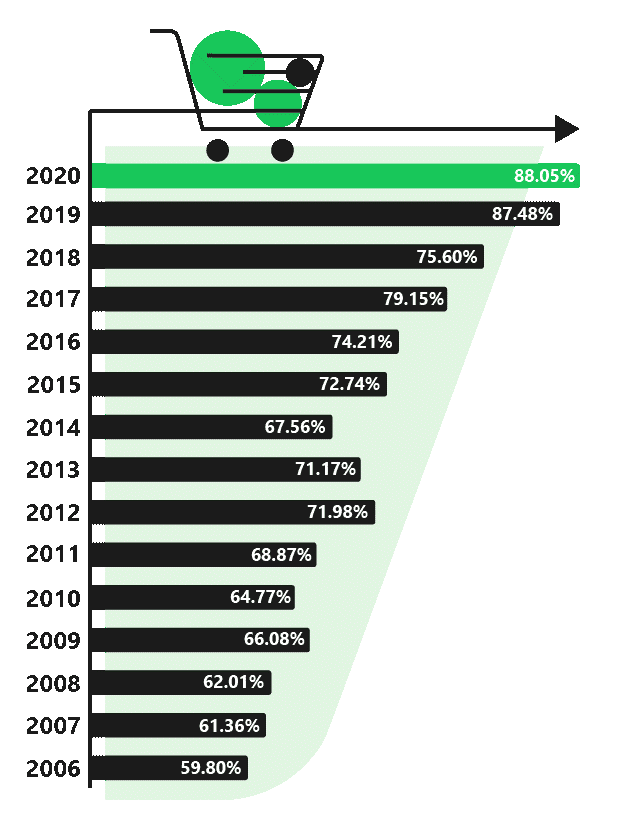
That’s a HUGE amount of potential revenue to be losing.
Ensure you have a cart abandonment email sequence in place to really capitalise on this and start capturing some of that lost revenue.
Using a push notification tool like Aimtell can also be a great way of capturing those visitors by sending reminders directly to their device
Method 3: Reveal Any Fees As Early As Possible
According to a study by Statista, 25% of users said unexpected charges were the reason for abandoning their cart!
Where possible try to offer flat rate or free shipping to increase conversion rates.
If this isn’t possible, however, be sure to announce any fees as early as possible and be fully transparent.
This is exactly what billion dollar retailer B&H Photography do with their Calculate Shipping button on the product page:
Method 4: Offer A Range Of Checkout Options
Consumers demand convenience and flexibility more than ever. That’s why why mobile-payment services are becoming increasingly popular.
In fact, Apply Pay alone has over 383 million users worldwide!!
That makes it one of the most prominent mobile payment providers worldwide with a global iPhone user base reach of 43 percent back in December 2018.
If you’re not offering a range of payment options in your checkout, you can be sure one of your competitors will! Don’t take that chance…
Stripe is one of the most flexible payment gateways with a range of different cards and integrations available.
If you use another payment gateway which is lacking in payment options, it’s worth speaking to them about possibility of adding more. Their support teams are often able to help you get these integrated!
Method 5: Show Checkout Progress
You’ve heard it before… a confused mind always says no.
Said another way, a confused mind doesn’t convert.
One of the best ways to stave off confusion during the checkout process is to show shoppers their progress.
People want to know where they are and how much farther they need to go to complete their purchase.
Here’s another example from one of the worlds largest ecommerce stores, B&H.
Method 6: Don’t Force People To Create An Account
At least not before you’ve made the sale.
The earlier research from Statista showed that 22% of online shoppers actually abandoned their cart as a result.
Multi-million dollar ecommerce stores, in most cases, give shoppers the ability to check out as a guest or “Express Checkout.”
Method 7: Provide Plenty Of High-Quality Images
The only down-side to online shopping is the inability to see or test an item before you buy.
As a result, consumers will often hesitate on buying products online when they feel unsure about exactly how it looks.
For tangible items like furniture or clothing, people want to be able to clearly see the texture of the item and get an idea for how it might feel.
That’s why both image quality and variety is incredibly important!
They want to be able to zoom and rotate those images and they want to see products in different colors, sizes and other options.
Product images sell, and the big online retailers know this.
Notice all the options Ikea has this Sofa.
Another great tip that you’ll notice here is them showing the product in use.
This helps to paint a picture in the users mind of what it would be like to use the product
For high-value products, it can also be a good idea to include 360-degree photography and/or videos.
Method 7: Reduce The Customer Risk
Some of your customers are afraid — so they don’t buy.
They’re afraid that you won’t do what you say you will do.
They’re afraid of giving personal and financial information to you.
They are afraid of getting ripped off.
NewEgg does 2.5 billion in online sales and they take the reduction of fear very seriously.
They prominently display the “NewEgg Promise” throughout the check out process.
This is further emphasised by the fact 15% of users abandoned cart due to security concerns as seen in the earlier research.
Think about how you can give your customers peace of mind through the entire shopping/checkout process.
Method 8: Make Cart Items Prominent & Easily Visible
According to the team at Digital Marketer; Joseph A Bank clothiers made a change that reduced shopping cart abandonment by as much as 8%.
They made items in the shopping cart viewable from everywhere on their site.
The decision was made after studying the checkout process of the top 200 online retailers.
B&H also do the same; here’s how they are currently handling cart visibility.
The green number 2 in the image below indicates the number of items in the shopping cart.
When you simply hover over the area, your entire cart become visible.
Method 9: Utilise A “Benefits Bar”
One of the first questions people will generally ask when they land on your store is “Why buy here and not from Amazon?”
Having a benefits bar visible on every page on the website can help remind customers why they should be shopping with you and not the competition.
Method 10: Offer Users A Wishlist
There will always be a percentage of visitors to your ecommerce store who are simply not ready to buy right now.
Especially if you’re selling high-value items!
They could be doing research, comparing prices. or even just planning to replace something in a few months time
That’s why online retail giant, NewEgg gives those shoppers a chance to add items to their wish list.
Having a wish list will often prompt the visitor to create an account. This in turn, gives you the ability to send automated reminder emails and increase conversions over time.
Method 11: Focus On The Experience
There’s a reason some of the world biggest e-commerce stores invest millions into UX testing.
When you make the shopping experience more seamless and enjoyable, people are more like to buy!
Billion dollar retailer REI have this nailed, with detailed menu’s, sub-menu’s and product categories.
They also have a range of great filtering options with the ability to filter products by rating and even types of trip.
This kind of menu is known as a mega-menu and can be easily configured on most ecommerce platforms.

Another great way to optimise for the customer experience is to have some form of Live Chat on your ecommerce store.
This will allow you to respond to any queries or concerns potential buyers have before they leave the website.
Drift is a brilliant free platform that allows you to add a live chat to your site.
Method 12: Use Exit Intent Offers
Exit-Intent popups can be a great way of capturing leads before people leave your site.
One of the key takeaways from some of the biggest ecommerce stores is that these need to be highly contextual.
In other words, only show people pop-ups that will interest them.
For example, if somebody has navigated to a particular product and then gone to leave, offer them a special discount on THAT particular product.
There are several different use cases here:
- On product pages: Stop users leaving after viewing a product by sweetening the deal somehow (eg: coupon code).
- Cart abandonment: Reduce cart abandonment with a last minute offer or ask people to save their shopping list.
- Running discounts: People might be more willing to hand over their email address for a special offer that lasts a week, rather than forcing them to buy now.
- Niche related lead magnet: For example, if you run a nutrition or well-being store, offering a lead magnet like “5 Superfood Health-Boosting Smoothies You Can Make From Home” before people leave could help you capture significantly more leads.
Using a push notification plugin can also help you recover visitors who didn’t purchase first time around.
Method 13: Utilise Scarcity & FOMO
Countless studies have shown that pack mentality and FOMO is a very really thing!
Pack mentality is a phenomenon in which people make decisions based upon the actions of others, sometimes without even realizing it.
Scarcity on the other hand, drives people to action, making them act quickly for fear of missing out on an opportunity.
One of the world’s biggest ecommerce marketplaces Groupon knows this better than anyone…
They regularly utilise popups, timers and availability prompts on their website, to encourage people to take action.
This can be great for brands who sell unique products only available in a limited quantity!
We really hope you found a tonne of value from these findings and that you’ll start implementing as many of these ideas as possible!
We’ve seen time and time again that even implementing one or two of these changes can really take your results to another level!
Want To Skyrocket Your E-Commerce Conversions?
Book your FREE digital review today and we’ll show you how you can sure your site converts and turn more of your visitors into sales
- 10 Highly Effective B2C Marketing Ideas & Strategies - April 10, 2023
- How To Create A Legendary Marketing Team In 2022 - October 10, 2022
- Which Ad Platform Is Best In 2024 - May 17, 2022
